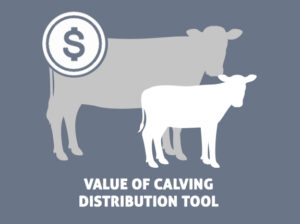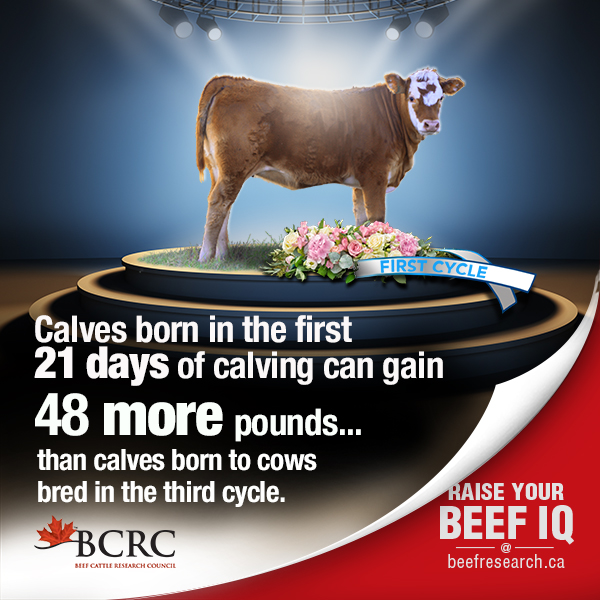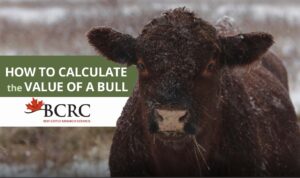Tightening the Calving Season: How to Increase Profitability Through Calving Distribution ▶️
Calving distribution is the percentage of calves born in each 21-day cycle throughout the calving season. Each time a cow is not bred during a 21-day heat cycle, it can cost up to 39 lbs of weaning weight (assuming an average daily gain on calves of 1.85 lbs/day).
The benefits of a shortened calving season are numerous:
- Having more calves born in the first 21 days of the calving season allows producers to market larger, more uniform groups of calves and increase their profit potential.
- It increases cow longevity.
- Heifers that were born earlier have greater pregnancy rates, remain in the herd longer and produce one more calf in their lifetime compared to those that calve in later periods.
- Herd vaccinations are easier to time.
- Increased uniformity allows easier comparison between calves.
The industry recommendation for calving season length is 63 days for cows and 42 days for heifers. This shines light on breeding management beyond a pregnancy rate. While high pregnancy rate is desired, there are potential economic losses if producers don’t have 60% of their cows calving in the first 21 days.
Value of Calving Distribution Calculator The BCRC’s Value of Calving Distribution Calculator allows producers to see what their current calving distribution is and what the short-term economic benefit would be if they move to the industry target of 60-25-10-5, or a condensed breeding season of three cycles.
60-25-10-5: 60% of females calving within the first cycle, followed by 25% calving between 21-42 days, 10% between 42-63 days and the remaining 5% calving in the fourth and final cycle.
It is important to remember that any increase in revenue from having more calves born earlier in the calving season (and therefore heavier weaning weights) needs to take into account the cost of achieving that outcome. Some examples of cost factors are:
- Pre-partum nutrition management to reach desired body condition score
- Increased risk of open cows
- Time, labour and facility if estrus synchronization or artificial insemination is used
The cost of implementing any of these options will vary based on a farm’s set up.
Watch the next video in BCRC’s Beef Cattle Reproduction & Calving Playlist:
Bull Power – How to Calculate the True Value of a Beef Herd Sire
Click here to subscribe to the BCRC Blog and receive email notifications when new content is posted.
The sharing or reprinting of BCRC Blog articles is welcome and encouraged. Please provide acknowledgement to the Beef Cattle Research Council, list the website address, www.BeefResearch.ca, and let us know you chose to share the article by emailing us at [email protected].
We welcome your questions, comments and suggestions. Contact us directly or generate public discussion by posting your thoughts below.


